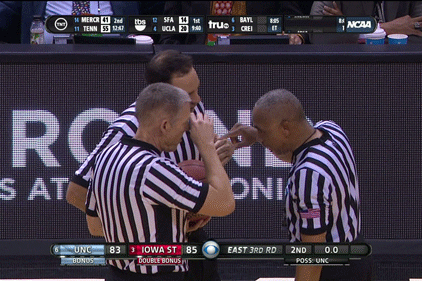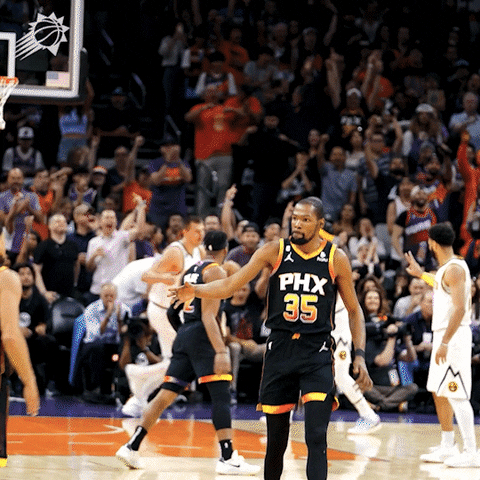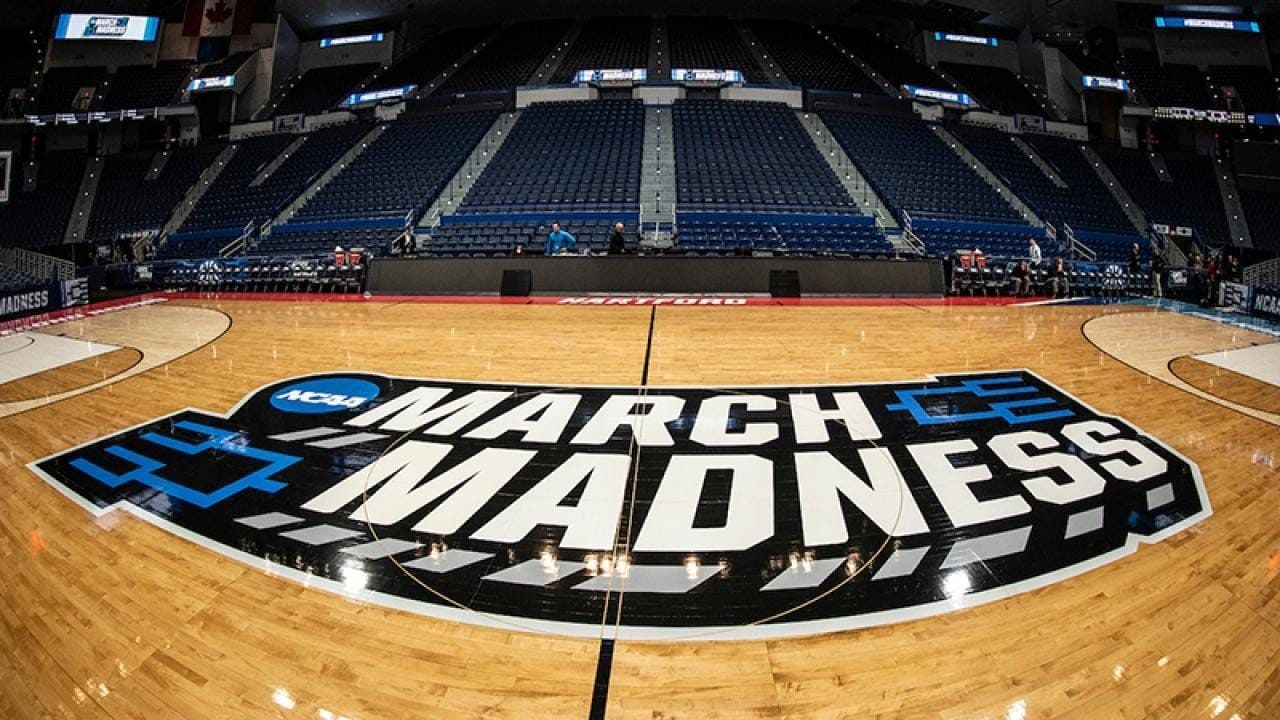- The Winning Shot Newsletter
- Posts
- The AAU Effect
The AAU Effect
Youth basketball's 'success factory' is failing the sport
"That's not a foul! My son got ALL BALL!" screams a father in designer sunglasses and a "Team Elite" t-shirt, his face reddening as he lurches forward from his courtside seat at the prestigious AAU Tournament. It's 9:15 AM on a Sunday in a suburban Atlanta gymnasium, and this is already his fourth outburst of the game. On the opposite sideline, a self-appointed coach – who just last year was managing a car dealership – frantically waves his arms, shouting "ISO! ISO!" to his team of 14-year-olds.

The game devolves into a familiar pattern: a crossover dribble, minimal ball movement, and another attempted poster dunk by a lanky teenager with 50,000 Instagram followers but no reliable jump shot. Two college scouts look exhausted in the corner, having watched similar scenes play out across eight courts since 8 AM. One of them shakes his head as a fundamentally sound chest pass sails untouched out of bounds – the recipient was too busy watching the videographer setting up his highlight-reel angle.
"Welcome to modern youth basketball"
This scene repeats itself thousands of times across America each weekend, a microcosm of basketball's troubling evolution from a team sport centered on fundamentals to an individual showcase prioritizing viral moments over victory. The impact of this transformation extends far beyond these overheated gymnasiums – it reaches the nearly empty March Madness matchups, patches of vacant seats telling their own story about basketball's disconnect from its roots.
The Numbers Don't Lie
The evidence is stark and increasingly troubling. NCAA men's basketball television ratings have dropped 24% since 2019, with marquee matchups drawing barely half the viewers they commanded a decade ago. The NBA faces similar challenges – regular season viewership has declined 18% in the same period, with even playoff games struggling to capture audiences outside major markets.
The financial impact is equally concerning. College basketball programs outside the Power 5 conferences report a 28% decrease in ticket revenue since 2019, while youth basketball tournament participation fees have risen by 45% in the same period, creating an economic barrier that further narrows the sport's talent pipeline.
The AAU Pipeline: Manufacturing Stars, Missing Fundamentals
Kids go to college having played 300 AAU games, but they can't make a proper chest pass or set a screen. You're teaching basic fundamentals to 18-year-olds that should have been learned at 12. It's like trying to teach calculus to someone who skipped basic arithmetic.
The modern AAU (Amateur Athletic Union) system, originally designed to develop young talent, has morphed into a hypercompetitive showcase circuit where:
• Players compete in up to 120 games per summer, often playing multiple games per day with minimal recovery time
• Fundamental skill development takes a backseat to highlight-reel plays, with practices focusing on scrimmages rather than drilling basics
• Team concepts are sacrificed for individual statistics, leading to a generation of players who struggle with basic offensive sets and defensive rotations
• Corporate sponsorships and social media exposure drive decision-making, with some tournaments streaming games of players as young as 12 years old
• The pressure to perform leads to early specialization, with 60% of youth players reporting playing basketball exclusively by age 14
• Coaching emphasis shifts from development to winning at all costs, with some AAU coaches lacking formal training or certification
The Ripple Effect
The impact extends far beyond college basketball, creating waves that reach every level of the sport.
We're seeing first-round picks who can't operate in a basic pick-and-roll setup. They have incredible individual skills but struggle with basketball literacy – understanding spacing, timing, and team concepts. It's like having a novelist who doesn't understand paragraph structure.
Golden State Warriors coach Steve Kerr infamously spent most of the playoffs playing the veterans instead of the young talent on the roster.
The basketball IQ level of incoming players has dropped significantly. Coaches have to spend the first year teaching things that used to be second nature to rookies. Basic cutting patterns and defensive rotations – things that players like Steph Curry and Klay Thompson mastered in high school – are now foreign concepts to many young pros.
This deterioration of fundamentals has led to:
• A style of play that prioritizes isolation basketball over team movement, resulting in less engaging games for spectators
• Declining participation in recreational leagues, as casual players feel intimidated by the perceived need for year-round commitment
The Path Forward: Practical Solutions
Several initiatives are showing promise in addressing these issues, offering hope for basketball's future:
The European Model Integration
Programs like Real Madrid's youth academy have become a blueprint for sustainable development:
◦ 3:1 practice-to-game ratio
◦ Focus on fundamental skills until age 14
◦ Progressive introduction of tactical concepts
◦ Emphasis on education alongside basketball
◦ Limited travel and tournament participation
◦ Regular skill assessments and development tracking
College Basketball's New Approach
The NCAA's new NIL (Name, Image, Likeness) rules could potentially reduce the influence of AAU programs by:
◦ Providing alternative pathways to visibility and success
◦ Encouraging athletes to stay local and develop with one program
◦ Creating opportunities for athletes to monetize skills beyond just playing
◦ Fostering connections between players and their communities
Grassroots Development Programs
Innovative local initiatives are emerging nationwide:
◦ Community-based skills academies
◦ After-school fundamental programs
◦ Parent education workshops
◦ Multi-sport development approaches
◦ Mental health and wellness integration
Voices for Change
"We need to return to basketball's roots," says Dawn Staley, South Carolina's women's basketball head coach, whose program has maintained consistently high attendance and development standards. "Success in basketball isn't just about individual talent; it's about creating players who understand and love the game. Our program's success comes from teaching the game the right way – fundamentals first, highlights second."
Michigan State's Tom Izzo adds, with characteristic passion: "The solution isn't complicated. Less games, more practice. Fewer highlight reels, more fundamentals. Less individual showcasing, more team development. We've overcomplicated a beautiful game, and it's time to get back to basics."

The voices for change are growing stronger, with support from unexpected quarters. NBA superstar Kevin Durant, a product of the AAU system, recently reflected: "Looking back, I wish I'd spent more time learning the game's nuances instead of just playing games. Young players today need to understand that development isn't always Instagram-worthy, but it's what creates lasting success."
My Modern Solution to the AAU Crisis
While the AAU system's flaws have been extensively documented, the complete dismantling of this deeply entrenched institution would create a vacuum in youth basketball development. Instead, we need a revolutionary hybrid approach that preserves AAU's valuable networking and exposure elements while fundamentally restructuring how young players develop. This new model, which we'll call Collin’s Development League (CDL), would transform youth basketball's landscape by creating a tier-based system that emphasizes both development and competition.
The CDL would divide each state into regional zones, each containing multiple districts. These zones would operate year-round basketball academies that combine traditional school-based programs with professional development structures. The key innovation lies in its three-phase approach to player development, which directly addresses the current AAU system's shortcomings while maintaining its benefits.
Phase One: Fundamental Development (Ages 8-13)
During this crucial period, players would participate in their local CDL academy for three two-hour sessions per week. Unlike the current AAU model's game-heavy schedule, 70% of this time would focus on fundamental skill development. The remaining 30% would be dedicated to controlled scrimmages that emphasize applying learned skills. Importantly, these academies would operate alongside, not in competition with, school programs.
Each CDL academy would employ certified developmental coaches who follow a standardized curriculum focused on core basketball skills: shooting mechanics, footwork, passing, defensive positioning, and basketball IQ. Players would need to demonstrate proficiency in these fundamental areas through standardized assessments before advancing to the next phase. This approach ensures that no player moves forward with crucial gaps in their foundational skills.
Phase Two: Technical Integration (Ages 14-16)
As players progress to this intermediate phase, the program introduces more complex concepts while maintaining its emphasis on fundamentals. The schedule expands to four sessions per week, with a 50-50 split between skill development and competitive play. This is where the CDL differs significantly from traditional AAU programs: competitive games would be structured as skill-specific showcases rather than traditional tournaments.
For example, a monthly "Playmakers Challenge" might focus on pick-and-roll execution, with teams earning points not just for scoring but for proper screening, timing, and decision-making. These specialized competitions would make fundamental basketball more exciting for players while ensuring they develop crucial team-play concepts. College scouts would attend these events, knowing they're seeing players demonstrate specific skills rather than just raw athleticism.
Phase Three: Elite Development (Ages 16-18)
The final phase represents a hybrid between traditional AAU competition and professional development programs. Players at this level would participate in both CDL academy training and a modified tournament circuit. However, unlike current AAU tournaments, these events would require teams to qualify through demonstrated skill proficiency rather than just program affiliation or sponsorship.
The tournament structure would be revolutionized by implementing a "Complete Player Rating" (CPR) system. Teams would need to maintain a minimum collective CPR score, which measures fundamental skills, basketball IQ, and team play metrics. This approach ensures that even highly competitive games maintain proper basketball principles.
Financial Sustainability and Access
To address the economic barriers prevalent in current AAU systems, the CDL would operate on a sliding-scale payment model subsidized by partnerships with NBA teams, sports apparel companies, and local businesses. Each NBA franchise would sponsor multiple CDL zones in their market, providing both financial support and professional resources. This connection creates a direct pipeline for identifying and developing local talent while ensuring program sustainability.
Additionally, the CDL would implement a revolutionary "Skills First" sponsorship model. Unlike traditional AAU programs, where sponsorship dollars often flow to the most visible teams, CDL sponsorship would be tied to player development metrics. Companies would sponsor specific skill development programs rather than entire teams, ensuring resources are directed toward actual player improvement rather than just exposure.
Technology Integration and Data-Driven Development
The CDL would leverage modern technology to track player development and ensure program effectiveness. Each academy would utilize AI-powered shooting machines, movement tracking systems, and performance analytics tools. This data would create comprehensive player development profiles, helping coaches identify areas needing improvement while providing players and parents with objective measures of progress.
Through a dedicated mobile app, players would receive personalized training plans, track their progress, and connect with coaches and teammates. This digital integration would also facilitate remote training sessions and skill development challenges, maintaining engagement between in-person sessions.
Coaching Development and Standardization
Perhaps most importantly, the CDL would establish a rigorous coaching certification program in partnership with USA Basketball and the NBA Coaches Association. All CDL coaches would need to complete this certification, which would combine basketball fundamentals with modern player development techniques, sports psychology, and injury prevention.
The certification program would create a new career path for basketball development professionals, helping to professionalize youth coaching. Coaches would progress through certification levels, with corresponding increases in responsibility and compensation, creating a sustainable career trajectory in youth basketball development.
Impact and Implementation
This system addresses the core issues plaguing modern youth basketball while providing a practical, scalable solution. By maintaining elements of competition and exposure while prioritizing development, the CDL offers a viable alternative to the current AAU system. Implementation would begin with pilot programs in major basketball markets, allowing the model to be refined before a national rollout.
The CDL represents more than just a new youth basketball system – it's a comprehensive reform that could revolutionize how we develop young players while preserving what makes basketball special. By emphasizing fundamentals without sacrificing the excitement that draws players and fans to the sport, this model offers a path forward that serves both individual players and the game itself.
A Return to Basketball's Core

As March Madness inches closer, the empty seats remind us that basketball is at a crossroads. The sport's future success depends on finding the balance between the excitement that draws fans and the fundamental excellence that creates lasting engagement.
"Basketball is the ultimate team sport," concludes Jay Wright, former Villanova head coach, who led his team to two national championships by emphasizing fundamentals and team play. "When we return to teaching the game the right way – emphasizing both individual skill and team concepts – we'll see the sport thrive again. The game is too beautiful, too important to our culture, to let it decline because we lost sight of what makes it special."
The challenge is clear: transform youth basketball from a star-making factory back into a development system that serves both the individual and the game itself. Only then can we expect those empty seats to fill once more, not just with bodies, but with fans who truly understand and appreciate the beautiful game of basketball.
The future of basketball hangs in the balance, but with thoughtful reform and a return to fundamentals, the sport can reclaim its position as one of America's most beloved games. The question isn't whether change is needed – it's whether we dare to implement it.